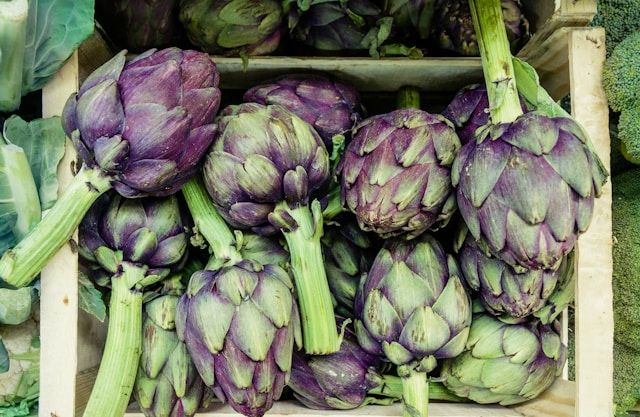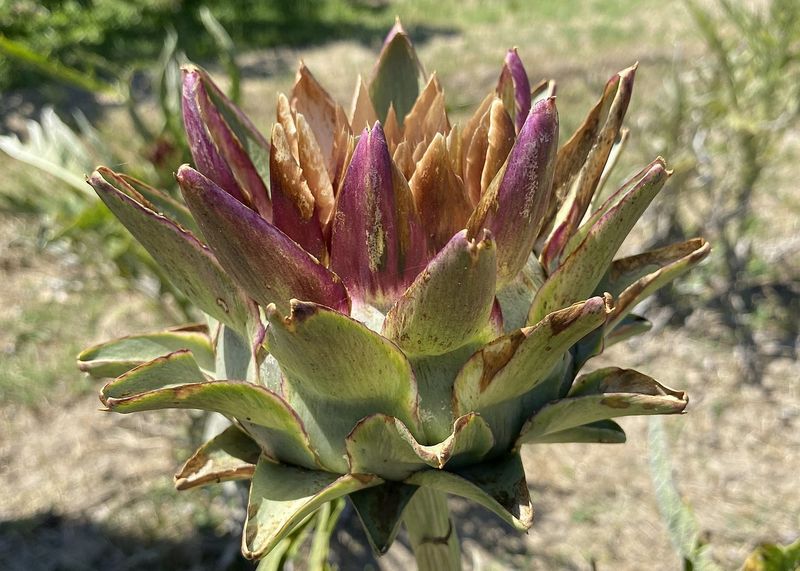In the vast landscape of food fraud and culinary scams, deceptions are often hidden in even the smallest things.
Although it may seem unbelievable, even small culinary treasures like Venetian castraùre violet, little spring gems from the Island of Sant'Erasmo, are not exempt from manipulation and counterfeiting.
In a context where food is as sacred as it is subject to deception, knowing the authenticity of products like Venetian castraùre becomes crucial.
Discovering venetian castraùre

Venetian castraùre are an authentic culinary delight, representing one of the most popular spring delicacies among locals and tourists visiting the picturesque city of Venice.
These small artichokes, with their purplish tones and pointed shape, are a Slow Food Presidium, testifying to their commitment to safeguarding and enhancing local culinary traditions.
Venetian castraùre represent a true gastronomic heritage of the city of Venice, a symbol of tradition, authenticity and quality.
In a culinary world often undermined by fraud and counterfeiting, knowing and appreciating local treasures such as Venetian castraùre becomes a gesture of authentic appreciation of genuine traditions and flavors.
The complexity of the venice castraùre
The variety of names given to the different parts of the Venice artichoke reflects the richness of its complexity and its great versatility in cooking.
However, it is important to note that despite its popularity and prestige in the market, the artichoke requires special care in its preparation and cleaning in order to avoid excessive waste and ensure an optimal culinary result.
Venetian castraùre: an authentic pleasure
Venetian castraùre, with their delicate flavor and tender texture, are a true gem of Venetian cuisine.
From raw to battered, from fried to stewed, these little delicacies lend themselves to a multitude of preparations, capturing the attention of the most refined palates and lovers of good food.
Safeguarding the authenticity of venetian castraùre
Given the growing concern about food provenance and quality, it is important to ensure that you buy Venetian castraùre from reliable and certified sources.
This is the only way to ensure that you enjoy an authentic, high-quality product while preserving local culinary traditions and supporting local producers who are committed to growing these spring treasures.
Preparation of venetian castraùre
In the kitchen, the preparation of Venetian castraùre is quick and versatile, especially during the months of April and May, when they are particularly coveted in the market.
These slightly bitter-tasting buds can be eaten raw or prepared in a variety of ways, such as frying them in hot oil or with a light batter.
However, to fully savor their taste, many prefer to consume them raw with simple seasonings such as oil, salt and pepper to preserve their original flavor to the fullest.
Authentic Venetian castraùre, from purple artichoke plants, are the subject of imitations and forgeries, often sold as such before the harvest season in April.
This has led producer associations to reiterate the importance of recognizing genuine Venetian castraure, which can be identified through a trademark registered by the consortium in 2012.
This measure aims to protect consumers and guarantee the quality of the product while defending the tradition and work of local farmers.
The true nature of castraure of Venice: seasonality, appearance and taste
Michele Borgo, president of Coldiretti Cavallino Treporti, pointed out a recurring phenomenon during this period: many sellers, in order to attract consumers' attention, define different artichokes as castraure, misleading them.
This behavior, once considered superficiality or carelessness, is now interpreted as bad faith. The Consortium reiterates the use of the term castraure for the first flower of the plant.
According to online testimonies, some bags contain both castraure and botoi, with only a portion of the artichokes actually corresponding to castraure.
To identify them, one can observe the typical characteristics: narrow, small and elongated artichokes with a green and purplish color.
In addition, harvest time, spring, and flavor, influenced by the saline soil of the Lagoon, are significant indicators.
Finally, castraure certified by the Consortium bear the distinctive mark as a guarantee of authenticity.

